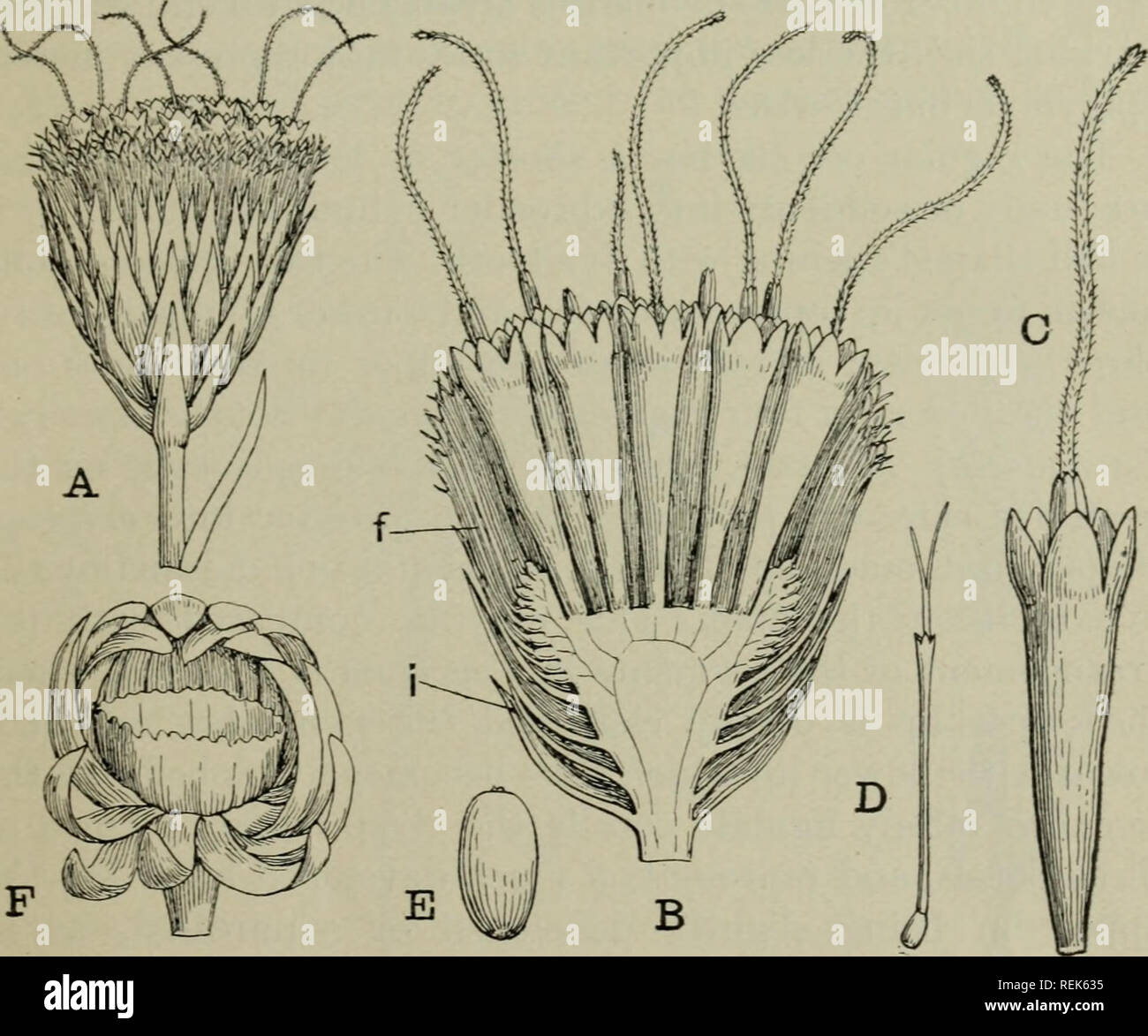. The classification of flowering plants. Plants. COMPOSITAE 595 pappus, which is only fully developed when the fruit is ripe. The whole edge develops to form a toothed, notched or divided crown, or the pappus takes the form of scales or bristles corresponding in number and position to five sepals (or fewer), as in many members of the Heliantheae, for instance Bidens (fig. 278, B), where there are two to four barbed bristles, or GaiUardia, where there are five (or more) dry. Fig. 274. Epaltes gariepina. A. Head of flowers, x 4. B. Head in vertical section, x2^; involucre. Several series of fem

Image details
Contributor:
The Book Worm / Alamy Stock PhotoImage ID:
REK635File size:
7.2 MB (292.8 KB Compressed download)Releases:
Model - no | Property - noDo I need a release?Dimensions:
1732 x 1443 px | 29.3 x 24.4 cm | 11.5 x 9.6 inches | 150dpiMore information:
This image is a public domain image, which means either that copyright has expired in the image or the copyright holder has waived their copyright. Alamy charges you a fee for access to the high resolution copy of the image.
This image could have imperfections as it’s either historical or reportage.
. The classification of flowering plants. Plants. COMPOSITAE 595 pappus, which is only fully developed when the fruit is ripe. The whole edge develops to form a toothed, notched or divided crown, or the pappus takes the form of scales or bristles corresponding in number and position to five sepals (or fewer), as in many members of the Heliantheae, for instance Bidens (fig. 278, B), where there are two to four barbed bristles, or GaiUardia, where there are five (or more) dry. Fig. 274. Epaltes gariepina. A. Head of flowers, x 4. B. Head in vertical section, x2^; involucre. Several series of female flowers, /, are arranged on the outside of the concave receptacle, the large disc-florets have both stamens and pistil but do not produce fruit; thev occupy the floor of the recej^tacle. C. A disc-floret, x 12. D. A female (fertile) floret, x 12. E. Fruit, x 22. F. Receptacle surrounded by involucre of bracts after the fruits have fallen, x 2|. membranous a^^Tied scales; or there are an indefinite number of bristles or hairs (fig. 273, E), sometimes forming several concentric series, often differing in nature, or crowded into a dense tuft. The outgrowths are purely epidermal develop- ments or the underlying cell-layers also contribute to their formation. It seems more in accordance with comparative morphology to regard the pappus as a development of the calyx, but it 38-2. Please note that these images are extracted from scanned page images that may have been digitally enhanced for readability - coloration and appearance of these illustrations may not perfectly resemble the original work.. Rendle, A. B. (Alfred Barton), 1865-1938. Cambridge, University press